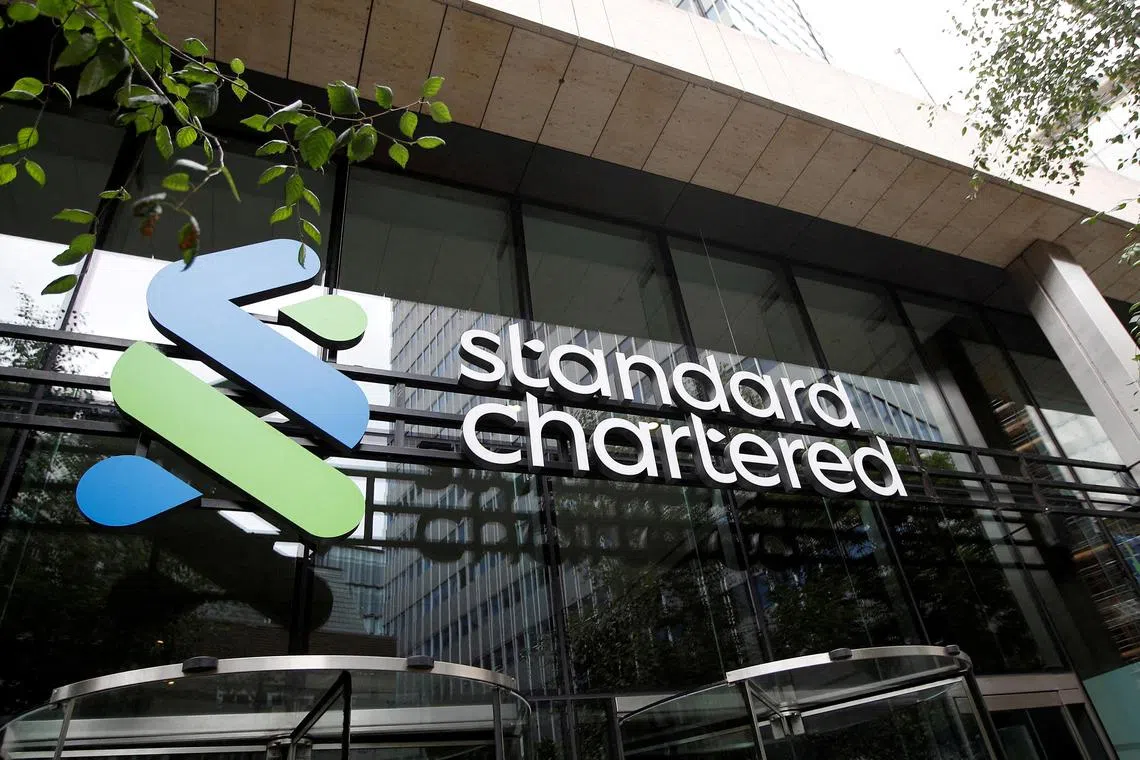StanChart’s Korea troubles deepen after exotic notes backfire
Sign up now: Get ST's newsletters delivered to your inbox

British lender Standard Chartered Bank is under pressure to compensate thousands of individuals in South Korea.
PHOTO: REUTERS
Follow topic:
SEOUL – Standard Chartered Bank stuck it out in South Korea’s hotly contested consumer banking market, while its global rivals threw in the towel one by one. It is now paying the price.
The British lender is under pressure to compensate thousands of individuals in the country, after selling them around US$900 million (S$1.2 billion) in complex securities tied to a Chinese stock index that performed badly.
It estimated in April that S. Korean customers’ losses from the so-called equity-linked securities (ELS) may total several hundred million dollars when they mature in 2024 and beyond.
StanChart’s US$100 million provision for the expected compensation is already equivalent to around 40 per cent of its net income from the country in 2023.
The losses are a reputational black eye and are once again raising questions about the bank’s strategy for South Korea, which used to be its second-largest market.
Stiff competition forced the lender to downsize earlier, and led HSBC Holdings and Citigroup to wind down their retail banking businesses in the country.
The bank is still trying to make its business work, but the tough operating environment means it has had to aggressively track larger domestic rivals.
StanChart Korea was one of the top five sellers of securities linked to the Hang Seng China Enterprises Index (HSCEI), even though it ranks ninth by assets in the country’s banking sector.
“It’s in a disadvantageous position when it comes to economies of scale and competition with domestic nationwide banks,” said Mr Lee Hyuk-joon, a director of financial industry analysis at credit rater Nice Investors Service.
StanChart Korea reported a drop of more than 10 per cent in its total assets in 2023, and Mr Lee said that has fuelled speculation about the bank’s future. It has 150 physical branches in the country, less than half the number it had in 2005.
StanChart Korea halted sales of ELS in January. Irate customers have threatened to cancel their credit cards and move their account balances to other banks if they do not receive full compensation for their losses.
Financial regulators are also planning to impose penalties on the biggest ELS sellers.
A spokesman for StanChart Korea said in an e-mailed statement that the firm cannot comment on regulators’ investigations while these are ongoing. He said the board has approved a compensation plan for affected customers, and that the bank takes the issue seriously.
South Korea is still one of StanChart’s top five income contributors, the spokesman said, adding that the group remains committed to its long-term investment in the country and continues to expand its business partnerships there.
Sales push
For years, StanChart’s international stature helped it attract more affluent South Koreans, enabling it to generate steady income from mortgages and other loans, and lucrative fees from selling investment products.
Banks and brokerages had advertised the China equity-linked notes with coupons of 3 per cent to 4 per cent annually when local bank deposit rates were around 1.2 per cent, and actively marketed them to many middle-aged and elderly South Koreans. The catch – which many people overlooked – was that investors would lose most or all of their money if the underlying index declined significantly. The HSCEI is about 43 per cent below its early 2021 peak, even after a recent rebound.
South Korea’s Financial Supervisory Service said mis-selling was rampant among the banks it investigated, and that they had set similarly aggressive internal sales targets for the ELS. South Korean investors were expected to lose a total of 5.8 trillion won (S$5.8 billion) from securities tied to the HSCEI, based on the Hong Kong stock benchmark’s end-February level.
Hundreds of StanChart Korea customers banded together in an online group after they lost money.
Mr S. Chang, a 46-year-old who asked that his first name not be used, said he was told the ELS were a safe alternative to term deposits, and that losses were unlikely. He said he invested money he got from selling his home and nearly all his dollar deposits into the China-linked securities.
At StanChart Korea branches, people with maturing term deposits or large savings account balances were escorted by bank tellers to private rooms, where employees pitched them the notes, according to several customers and an employee.
Mr Chang said some members of the group he represents invested their retirement savings and even funds from insurance payouts following the death of their loved ones. He showed Bloomberg two investment contracts that he was given by the bank. One stated on its front that there was risk of principal loss, and the other did not.
Some buyers were lured by free gifts, including a 3.75g gold coin engraved with the face of a bull and a Dyson Airwrap hairdryer that usually retails for about US$600. BLOOMBERG

